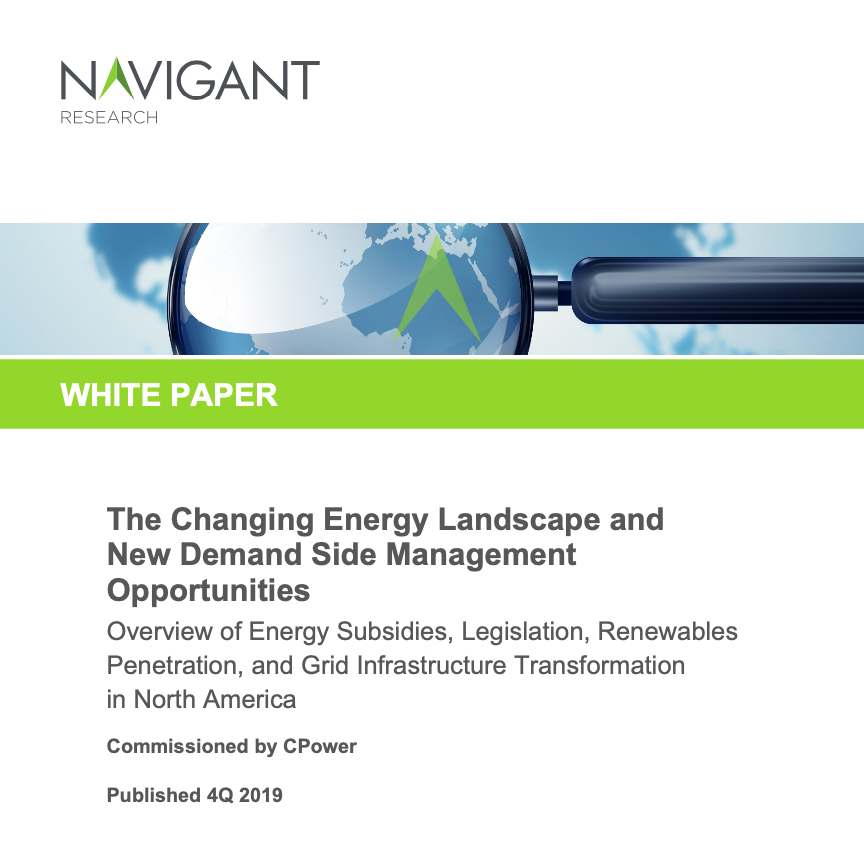White Paper
Navigant: The Changing Energy Landscape and New Demand Side Management Opportunities
Overview of Energy Subsidies, Legislation, Renewables Penetration, and Grid Infrastructure Transformation
in North America
The year is 2040. Grid modernization has seen the integration of large-scale storage and renewables overtake traditional fossil fuel and nuclear generation. Sustainability, grid reliability, and energy technologies have been major drivers for a modern grid structure. Customers have become more connected and engaged with their utilities and drive the utility business model beyond selling kilowatt-hours. Over the last two decades, consumers have adopted new solutions including distributed generation, microgrids, and energy storage. EVs dominate the roadways and have reintroduced load growth while shifting the demand curve. In turn, the grid has moved from relying on traditional generation to flattening the demand curve through flexible demand side management (DSM) solutions. These shifts have created a more integrated and intelligent grid infrastructure that supports a customer-first, collaborative, clean, and highly diverse energy ecosystem.
This white paper examines the changes and technologies that are driving this grid of the future. Section 2 analyzes the evolving energy industry and associated DSM opportunities at the federal level across the US. Bedrock regulations and support for the energy transformation are contextualized within the consumer landscape.
Beyond the national landscape, Section 3 discusses wholesale market opportunities to integrate distributed energy resources (DER) technologies, bolster demand response (DR), and develop transparent program pricing across US and Canadian independent system operators (ISOs) and regional transmission organizations (RTOs).
Section 4 examines influential state-level developments that are likely to have a disproportionate effect on the energy grid in 2040. In recent years, several states increased their renewable portfolio standards (RPS), energy savings, and emissions targets. Split between renewable and carbon-free, state decisions have resulted in a variety of subsidies for nuclear energy, grid modernization efforts, and efficiency increases. While several states are demonstrating clean energy and grid modernization leadership, other states are looking to preserve legacy coal and fossil fuel stocks. This uneven landscape creates disparate DSM opportunities at the state level.
The white paper concludes with a variety of recommendations for utilities, energy suppliers, and commercial and industrial (C&I) energy customers in Section 5. Despite varying regulatory landscapes and wholesale opportunities to integrate DER technologies, this section provides suggestions and considerations for how to best prepare for the proliferation of distributed grid resources over the next two decades.
By Brett Feldman
Research Director, Navigant
Roberto Rodriguez Labastida
Senior Research Analyst, Navigant
Neil Strother
Principal Research Analyst, Navigant
Jessie Mehrhoff
Research Analyst, Navigant, Navigant
